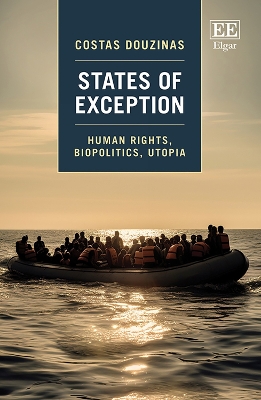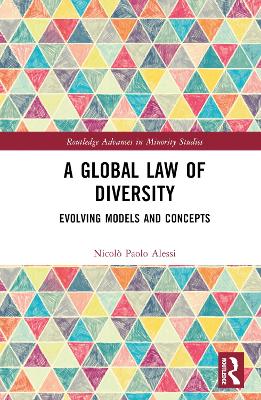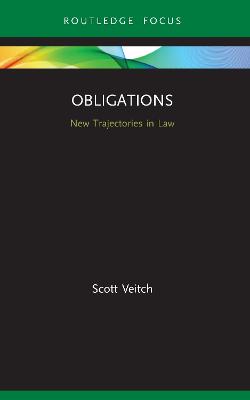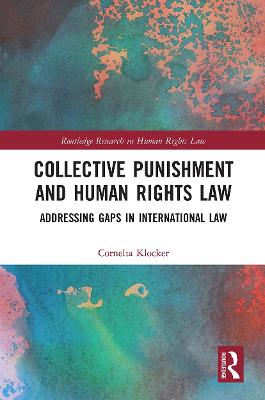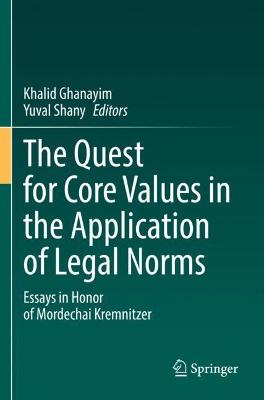Use of Force against Individuals in War under International Law
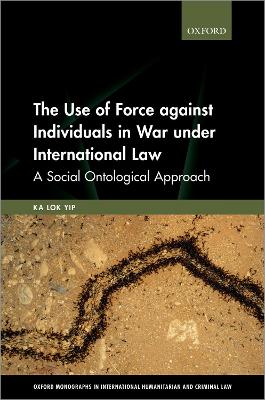 -10%
portes grátis
-10%
portes grátis
Use of Force against Individuals in War under International Law
A Social Ontological Approach
Yip, Ka Lok
Oxford University Press
04/2022
336
Dura
Inglês
9780198871699
15 a 20 dias
646
Descrição não disponível.
General Introduction
Chapter 1: The Legality of the Use of Force against Individuals in War Description of a Difficulty
I. Introduction
II. Legal Norms Relevant to the Use of Force against Individuals in War
III. Jurisprudence on the Relationship among Different Legal Norms Relevant to the Use of Force against Individuals in War
IV. Key Approaches to the Relationship among Different Legal Norms Relevant to the Use of Force against Individuals in War
V. Conclusion
Chapter 2: Six Concepts of Legality and their Disambiguation
I. Introduction
II. Vertical Legality
III. Horizontal Legality
IV. De-conflation of Different Concepts of Legality
V. Conclusion
Chapter 3: Verticalizing and Horizontalizing the Notion of Legality under International Human Rights Law
I. Introduction
II. The Layered Nature of Legality under IHRL for the Right to Life and the Right to Liberty
III. The Dimension of Vertical Legality under IHRL
IV. The Dimension of Horizontal Legality under IHRL
V. Conclusion
Chapter 4: Subjectivising and Objectivising the Legal Techniques for Establishing the Relationship among International Legal Norms
I. Introduction
II. Justifications for and Limits to the Use of Legal Techniques
III. Applying Lex Specialis to Establish the Relationship among Different Laws on the Use of Force against Individuals in War
IV. Applying Systemic Integration to Establish the Relationship among Different Laws on the Use of Force against Individuals in War
V. Conclusion
Chapter 5: Ontologising the Laws on the Use of Force against Individuals in War
I. Introduction
II. Social Ontology
III. The Ontological Presuppositions of LOAC and IHRL
IV. Three Patterns of Ontological Conflation
V. Conclusion
Chapter 6: Agents and Structures in the Field of Via Dolorosa
I. Introduction
II. Effects of Social Structures on the Practices of the Use of Force against Individuals in War
III. Effects of Human Agency on the Practices of the Use of Force in Armed Conflict and Occupation
IV. Convergence of Laws, Conflation of Ontologies
V. Conclusion
General Conclusion
Theoretical Implications
Methodological implications
Practical Implications
Chapter 1: The Legality of the Use of Force against Individuals in War Description of a Difficulty
I. Introduction
II. Legal Norms Relevant to the Use of Force against Individuals in War
III. Jurisprudence on the Relationship among Different Legal Norms Relevant to the Use of Force against Individuals in War
IV. Key Approaches to the Relationship among Different Legal Norms Relevant to the Use of Force against Individuals in War
V. Conclusion
Chapter 2: Six Concepts of Legality and their Disambiguation
I. Introduction
II. Vertical Legality
III. Horizontal Legality
IV. De-conflation of Different Concepts of Legality
V. Conclusion
Chapter 3: Verticalizing and Horizontalizing the Notion of Legality under International Human Rights Law
I. Introduction
II. The Layered Nature of Legality under IHRL for the Right to Life and the Right to Liberty
III. The Dimension of Vertical Legality under IHRL
IV. The Dimension of Horizontal Legality under IHRL
V. Conclusion
Chapter 4: Subjectivising and Objectivising the Legal Techniques for Establishing the Relationship among International Legal Norms
I. Introduction
II. Justifications for and Limits to the Use of Legal Techniques
III. Applying Lex Specialis to Establish the Relationship among Different Laws on the Use of Force against Individuals in War
IV. Applying Systemic Integration to Establish the Relationship among Different Laws on the Use of Force against Individuals in War
V. Conclusion
Chapter 5: Ontologising the Laws on the Use of Force against Individuals in War
I. Introduction
II. Social Ontology
III. The Ontological Presuppositions of LOAC and IHRL
IV. Three Patterns of Ontological Conflation
V. Conclusion
Chapter 6: Agents and Structures in the Field of Via Dolorosa
I. Introduction
II. Effects of Social Structures on the Practices of the Use of Force against Individuals in War
III. Effects of Human Agency on the Practices of the Use of Force in Armed Conflict and Occupation
IV. Convergence of Laws, Conflation of Ontologies
V. Conclusion
General Conclusion
Theoretical Implications
Methodological implications
Practical Implications
Este título pertence ao(s) assunto(s) indicados(s). Para ver outros títulos clique no assunto desejado.
General Introduction
Chapter 1: The Legality of the Use of Force against Individuals in War Description of a Difficulty
I. Introduction
II. Legal Norms Relevant to the Use of Force against Individuals in War
III. Jurisprudence on the Relationship among Different Legal Norms Relevant to the Use of Force against Individuals in War
IV. Key Approaches to the Relationship among Different Legal Norms Relevant to the Use of Force against Individuals in War
V. Conclusion
Chapter 2: Six Concepts of Legality and their Disambiguation
I. Introduction
II. Vertical Legality
III. Horizontal Legality
IV. De-conflation of Different Concepts of Legality
V. Conclusion
Chapter 3: Verticalizing and Horizontalizing the Notion of Legality under International Human Rights Law
I. Introduction
II. The Layered Nature of Legality under IHRL for the Right to Life and the Right to Liberty
III. The Dimension of Vertical Legality under IHRL
IV. The Dimension of Horizontal Legality under IHRL
V. Conclusion
Chapter 4: Subjectivising and Objectivising the Legal Techniques for Establishing the Relationship among International Legal Norms
I. Introduction
II. Justifications for and Limits to the Use of Legal Techniques
III. Applying Lex Specialis to Establish the Relationship among Different Laws on the Use of Force against Individuals in War
IV. Applying Systemic Integration to Establish the Relationship among Different Laws on the Use of Force against Individuals in War
V. Conclusion
Chapter 5: Ontologising the Laws on the Use of Force against Individuals in War
I. Introduction
II. Social Ontology
III. The Ontological Presuppositions of LOAC and IHRL
IV. Three Patterns of Ontological Conflation
V. Conclusion
Chapter 6: Agents and Structures in the Field of Via Dolorosa
I. Introduction
II. Effects of Social Structures on the Practices of the Use of Force against Individuals in War
III. Effects of Human Agency on the Practices of the Use of Force in Armed Conflict and Occupation
IV. Convergence of Laws, Conflation of Ontologies
V. Conclusion
General Conclusion
Theoretical Implications
Methodological implications
Practical Implications
Chapter 1: The Legality of the Use of Force against Individuals in War Description of a Difficulty
I. Introduction
II. Legal Norms Relevant to the Use of Force against Individuals in War
III. Jurisprudence on the Relationship among Different Legal Norms Relevant to the Use of Force against Individuals in War
IV. Key Approaches to the Relationship among Different Legal Norms Relevant to the Use of Force against Individuals in War
V. Conclusion
Chapter 2: Six Concepts of Legality and their Disambiguation
I. Introduction
II. Vertical Legality
III. Horizontal Legality
IV. De-conflation of Different Concepts of Legality
V. Conclusion
Chapter 3: Verticalizing and Horizontalizing the Notion of Legality under International Human Rights Law
I. Introduction
II. The Layered Nature of Legality under IHRL for the Right to Life and the Right to Liberty
III. The Dimension of Vertical Legality under IHRL
IV. The Dimension of Horizontal Legality under IHRL
V. Conclusion
Chapter 4: Subjectivising and Objectivising the Legal Techniques for Establishing the Relationship among International Legal Norms
I. Introduction
II. Justifications for and Limits to the Use of Legal Techniques
III. Applying Lex Specialis to Establish the Relationship among Different Laws on the Use of Force against Individuals in War
IV. Applying Systemic Integration to Establish the Relationship among Different Laws on the Use of Force against Individuals in War
V. Conclusion
Chapter 5: Ontologising the Laws on the Use of Force against Individuals in War
I. Introduction
II. Social Ontology
III. The Ontological Presuppositions of LOAC and IHRL
IV. Three Patterns of Ontological Conflation
V. Conclusion
Chapter 6: Agents and Structures in the Field of Via Dolorosa
I. Introduction
II. Effects of Social Structures on the Practices of the Use of Force against Individuals in War
III. Effects of Human Agency on the Practices of the Use of Force in Armed Conflict and Occupation
IV. Convergence of Laws, Conflation of Ontologies
V. Conclusion
General Conclusion
Theoretical Implications
Methodological implications
Practical Implications
Este título pertence ao(s) assunto(s) indicados(s). Para ver outros títulos clique no assunto desejado.


